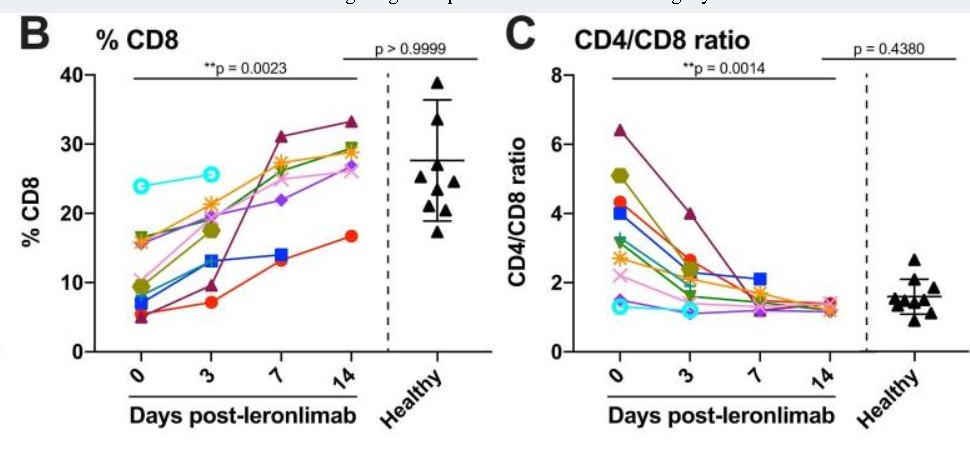(Total Views: 581)
Posted On: 07/01/2023 10:17:54 AM
Post# of 157773
CD3 is highly expressed in CCR5 cells in an inflammatory or autoimmune environment. Migration of the CCR5/CD3 cells to the liver would be induced by CCL5 (RANTES). CCR5 blocking has been shown to suppress autoimmunity which is one of the primary causes of type 1 diabetes. One of our Covid studies showed exactly the same thing " leads to an increase in the proportion of regulatory T cells and of exhausted CD8+ T cells in peripheral blood" when leronlimab is used.
So leronlimab would not only do what Tzied does but would also halt inflammation, the other hallmark of type 1 diabetes, Of note - CD3 blocking increases levels of TNF, IL-3, IL-4, and IL-6 all inflammatory factors. Which may be why the long term prognosis of type 1 diabetes in the Tzied trial is very similar to placebo.

So leronlimab would not only do what Tzied does but would also halt inflammation, the other hallmark of type 1 diabetes, Of note - CD3 blocking increases levels of TNF, IL-3, IL-4, and IL-6 all inflammatory factors. Which may be why the long term prognosis of type 1 diabetes in the Tzied trial is very similar to placebo.
Quote:
Reversal of immune dysfunction, CCR5 receptor occupancy, and decrease in SARS-CoV-2 plasma viral loads in critically ill COVID-19 patients after leronlimab administration. (A–C) Plasma levels of IL-6 (A), and peripheral blood CD8+ T cell percentages of CD3+ cells (and CD4/CD8 T cell ratio (C)
https://www.ncbi.nlm.nih.gov/pmc/articles/PMC7654230/

